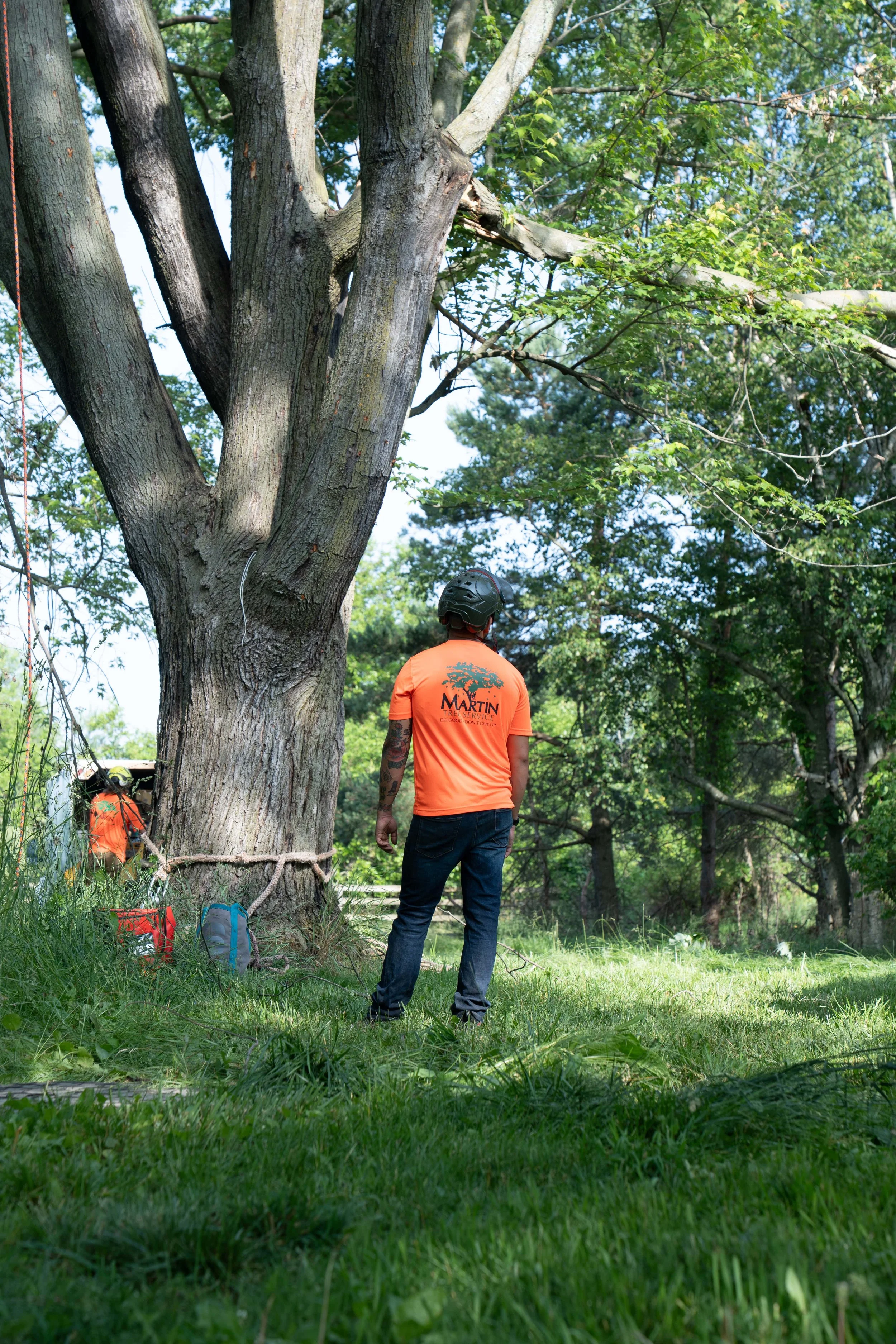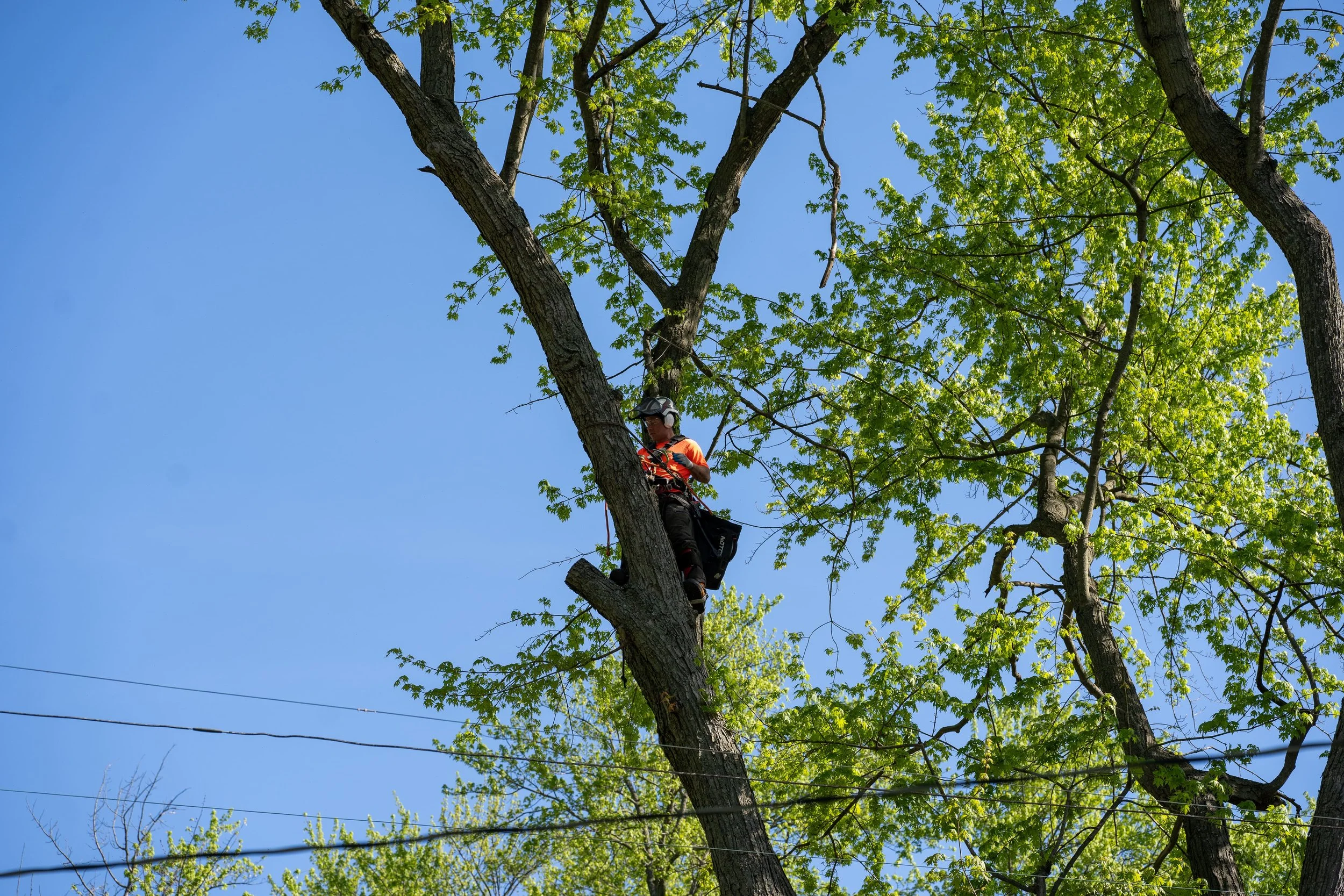Why Late Summer is Prime Time for Tree Inspections in Michigan
As the days begin to shorten and the humid Michigan summer gives way to a cooler breeze, many homeowners start to focus on preparing their homes for fall. Lawncare transitions to leaf management, kids head back to school, and summer vacations wrap up. But amid all of this seasonal change, there’s one important task that often gets overlooked, scheduling a professional tree inspection.
Late summer is actually one of the most important times of year to assess the health and stability of your trees. As certified arborists serving Michigan communities, we can confidently say this is prime time for catching problems early, preventing costly damage, and making informed decisions before winter hits. Here’s why.
Trees Tell Their Story by Late Summer
Throughout spring and early summer, trees are in active growth. They’re producing new leaves, extending branches, and using stored energy to fuel development. But by late summer, typically August into early September, trees begin to show the results of the season’s challenges.
Any stress they’ve experienced over the past few months becomes more visible. Drought damage, insect infestations, fungal diseases, root problems, and internal decay have had time to manifest. When inspecting trees during this window we're able to evaluate their health based on real, season-long performance. If a tree is struggling, signs like canopy thinning, premature leaf browning, dieback in the upper branches, or stunted growth, will be on full display.
In short, late summer gives us a clear picture of a tree’s overall condition. That’s something we can’t always see in early spring or after leaf-drop in fall.
Early Detection = Safer, Smarter Decisions
One of the most common questions we hear from homeowners is, “How do I know if my tree is unsafe?” The truth is, many dangerous trees look safe to the untrained eye. A tree can be green and leafy, yet have severe structural defects, internal rot, or unstable root systems that put it at risk of failure.
Late summer inspections allow us to catch those issues while there’s still time to act. This is especially critical before Michigan’s fall windstorms and heavy winter snow arrive. We’ve all seen how wet snow can snap limbs or uproot weakened trees. By identifying compromised branches or decay-prone trunks now, we can take preventative steps like pruning, bracing, or removal, long before snow makes that work more dangerous and expensive.
Pests and diseases are Easier to Spot Now
Michigan trees face several serious insect and disease threats, and late summer is the perfect time to identify them.
Take emerald ash borer, for example. This invasive beetle has devastated ash trees throughout the state. By late summer, symptoms like canopy thinning, bark splitting, and D-shaped exit holes are more apparent. Likewise, fungal diseases such as oak wilt, apple scab, and anthracnose typically show their damage in leaf spots, wilting, and dieback, all of which are easier to diagnose while leaves are still on the tree.
Many of these pests and diseases are time-sensitive. If we detect oak wilt now, for instance, we may recommend immediate removal of the infected tree before the disease can spread to nearby oaks through root grafts or beetle transmission. Late summer is one of the last opportunities to take action before trees go dormant in fall, at which point treatments become less effective or unsafe to apply.
Planning Tree Work Before Fall and Winter
Homeowners often don’t realize that tree care is a seasonal business. While certified arborists work year-round, certain treatments and removals are best done during specific times of the year, both for the health of the tree and for logistical reasons.
Late summer inspections allow us to prioritize tree care while the weather is still cooperative. If pruning is recommended, we have time to schedule it before the fall workload piles up. If cabling or bracing is needed for structural support, we can do that before snow adds extra weight. And if removal is necessary, it can be done safely without frozen ground or high winds complicating the job.
It’s also worth noting that some tree diseases spread more aggressively in the spring. If we wait until then to inspect or take action, we risk infecting neighboring trees or facing more extensive damage. That’s why a proactive inspection in August or September can save both time and money.
Tree Inspections Add Value to Your Property
A healthy, well-maintained tree adds beauty, shade, and value to your home. But a declining or unstable tree can do the opposite, threatening your roof, vehicles, utility lines, or even your family’s safety.
Late summer inspections give homeowners the chance to make informed decisions about tree health, safety, and long-term landscape planning. Whether it’s catching a pest problem early, deciding if a tree needs support, or simply learning more about your landscape, these assessments offer peace of mind and help protect your investment.
This is especially important if you’re considering home improvements, selling your house, or planning landscape changes. Understanding your trees’ condition ahead of time prevents unpleasant surprises down the road.
What to Expect from a Professional Tree Inspection
When we perform a tree inspection at Martin Tree Service, it’s not just a quick glance from the curb. As certified arborists, we assess each tree’s canopy, trunk, root flare, and surrounding soil. We look for structural weaknesses, disease symptoms, insect activity, and signs of stress. In some cases, we may use tools to investigate internal decay.
We also ask about the tree’s history. Have you noticed changes in leaf production? Has there been recent construction or trenching nearby? Was the tree struck by lightning or impacted by a storm? These details help us form a complete picture of the tree’s health and stability.
From there, we provide honest, professional recommendations. Sometimes that means no action is needed. Other times, it could mean targeted pruning, cabling, pest management, or planning for removal. Our goal is always to keep your trees healthy and your property safe.
Don’t Wait! Schedule Your Late Summer Inspection Today
In Michigan, tree health is not something to take for granted. Between seasonal storms, pest pressures, and natural aging, trees face a wide range of challenges. Late summer offers a perfect opportunity to stay ahead of those risks and ensure your landscape stays both beautiful and safe.
If you haven’t had your trees inspected recently, or if you’ve noticed any signs of stress, damage, or decline, now is the time to act. Martin Tree Service is here to help. Our certified arborists bring the expertise, experience, and equipment needed to give your trees the care they deserve.
Give us a call or click here to schedule your inspection and make the most of Michigan’s late summer season. Your trees and your home will thank you for it.
For expert tree care solutions, trust the professionals at Martin Tree Care. Whether you need stump grinding, tree removal, or general maintenance, our experienced team is here to help. Don’t take chances with DIY methods—let us handle the job safely and efficiently. Contact Martin Tree Care today for reliable, professional tree services in Livingston County!


